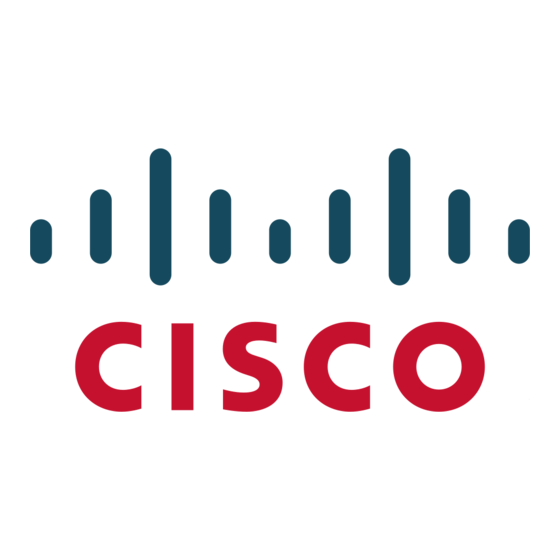Cisco TelePresence MX300G2 Manuel - Page 20
Parcourez en ligne ou téléchargez le pdf Manuel pour {nom_de_la_catégorie} Cisco TelePresence MX300G2. Cisco TelePresence MX300G2 45 pages. In-room control on touch 10
Également pour Cisco TelePresence MX300G2 : Manuel (45 pages)

Widgets
Table of contents
The Touch 10 in-room control panel is composed of user interface
elements called widgets. You can find the complete widget library in
Introduction
the right pane of the in-room control editor.
•
Create a user interface
•
API for in-room control
The content of the next few pages describes each widget type, with
emphasis on:
• Commands that change the value of the widget
Widgets
Widgets
• Events that are sent (pressed, changed, released, clicked) and
• Examples of commands and events, both in terminal output mode
Command reference
Syntax and semantics for all events, commands and statuses that are
related to in-room controls (user interface extensions) are included in
Troubleshooting
the Command reference chapter.
Tips and tricks
Examples
In-Room Control on Touch 10
for Cisco TelePresence
MX200 G2, MX300 G2,
MX700, MX800,
SX10, SX20, SX80
Collaboration Endpoint
software version CE8.2
D15358.02 - JULY 2016
www.cisco.com
© 2016 Cisco Systems, Inc.
All rights reserved.
General
tab: Buttons with custom text, group buttons, toggle
button, sliders, text fields and more.
Icons
tab: Buttons with familiar symbols for Home, Power, Arrow
up/down/left/right, Camera controls, Loudspeaker controls,
Microphone control, Media player controls, and more.
which actions trigger these events
and XML output mode
The Widget Identifier
All widgets on a Touch 10 in-room control panel need a unique
identifier, a Widget ID. The Widget ID may either be defined by
you, or assigned automatically. The Widget ID can be any name or
number; we recommend using a descriptive name without special
characters. The maximum number of characters is 40.
The Widget ID is the programming link between Touch 10, the video
system, and the control system. The Widget ID will be included in all
events that are associated with a widget, and you must use the same
identifier when you send commands to that widget via the code that
you write for your control system.
Group Identifiers
One of the widgets, the Group button, has two types of identifiers:
The Widget ID refers to the complete group of buttons, while
Group IDs are unique identifiers for the individual buttons within the
group.
Widget_ID_groupbutton
Option 1
Group_ID_one
Group_ID_two
A Group ID is assigned automatically, but can be defined by you
instead. A Group ID can be any name or number; we recommend
using a descriptive name without special characters. The maximum
number of characters is 255.
20
Option 2
Option 3
Group_ID_three
